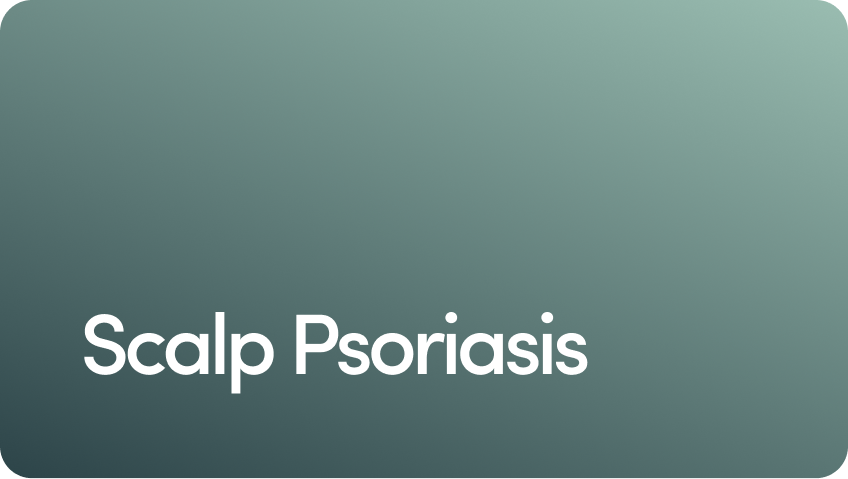Content
Get thicker, fuller hair with dermatologist developed treatments
Latisse FAQs: How Long Does Latisse Last & More

Reviewed by Sara Harcharik Perkins, MD
Written by Vanessa Gibbs
Published 07/11/2019
Updated 02/26/2025
Latisse® is an FDA-approved treatment to help lashes grow longer, thicker, and darker. It’s a liquid solution that’s easy and effective. If you’re dreaming of fuller-looking lashes, Latisse offers results without the hassle of falsies or extensions.
Got questions about Latisse? We’ve got answers.
Below, we’ve answered 22 of the most frequently asked questions about this medication, including “how long does Latisse last?”
Content
1. What Is Latisse?
Latisse is a liquid solution that you apply to the base of your upper eyelids, along the lash line. With daily use, it can increase the length of your eyelashes and make them look thicker and darker.
The Latisse liquid solution contains the active ingredient bimatoprost. Bimatoprost was approved by the FDA for glaucoma in 2001, but patients noticed a surprising side effect: longer eyelashes! The FDA approved the medication specifically for eyelash growth in 2008.
Unlike many other eyelash growth products, Latisse is scientifically proven to help you grow longer, thicker, and more prominent eyelashes. It’s backed up by a wealth of studies showing lash improvements, including in people with conditions that affect eyelash growth, like chemotherapy-induced madarosis (AKA loss of eyelashes).
In addition to stimulating eyelash growth, bimatoprost can also help treat other eye conditions like glaucoma and ocular hypertension.
2. How Does Latisse Work?
Experts aren’t completely sure how Latisse works to improve the length, thickness, and color of your eyelashes. Currently, the scientific data suggests Latisse increases the amount of time your eyelashes spend in the growth phase of the hair cycle.
Just like the hairs on your scalp, your eyelashes go through a four-stage cycle. At the start of the cycle, a new hair breaks from the follicle. Then, hair grows to its final length before a new strand replaces it.
Latisse may increase the amount of time each lash spends in the anagen — or growth — stage of this cycle, causing it to grow longer and thicker than usual. Over time, this gives you more prominent eyelashes as each lash grows to its new length and thickness.
3. Does Latisse Actually Work?
Yes! According to data from the FDA, 79 percent of people who use Latisse experience eyelash growth after using the medication for 20 weeks or longer.
By week 16, people who use Latisse daily experience a 25 percent mean increase in the length of their eyelashes. Plus, eyelash thickness increases by a whopping 106 percent.
Latisse also causes a slight increase in the darkness of the eyelashes, although this isn’t quite as intense as the effect on eyelash length and thickness.
Other studies also show that Latisse is an effective eyelash enhancer.
Like many other medications, the results of Latisse aren’t instant. Usually, you’ll start to notice some improvements in the length, thickness, and darkness of your eyelashes after using Latisse daily for at least two months.
If you use Latisse every other day, or occasionally forget to use it, it may take slightly longer for the medication to start working. It typically takes three to four months before you’ll see the full results of Latisse.
5. How Long Does Latisse Last?
Latisse works as long as you continue using it, meaning you can keep applying it nightly to maintain your results. Your eyelashes will still go through their normal growth cycle, but they’ll maintain any extra length, thickness, and color.
Many people who use Latisse switch to using it every other night after reaching their desired lash length and thickness.
If you stop using Latisse, your eyelashes will gradually lose the extra thickness, length, and color provided by the medication until they reach their previous appearance. This can take anywhere from a few weeks to several months or more.
6. How Long Can You Use Latisse?
You may be able to use Latisse long term to maintain longer lashes. After 16 weeks of use, talk to a healthcare provider about continuing Latisse treatment.
As we mentioned, once you’ve got the lashes you’re after, you may be able to use Latisse every other night to maintain them, instead of every night.
Yes! Latisse is an effective treatment for eyelash hypotrichosis, a condition that causes inadequate eyelash growth. In fact, doctors often prescribe Latisse to treat this condition.
A doctor might also prescribe Latisse to treat certain medication-related eyelash hair loss.
If you have a condition that affects the length and thickness of your eyelashes, Latisse may be an effective treatment option.
8. Is Latisse Easy to Use?
Latisse is a very easy medication to use. In all, it only takes a few minutes every day to apply Latisse properly.
Here’s how you use Latisse:
Clean your face and hands, remove makeup and contact lenses, if any.
Apply one drop of Latisse to one of the sterile applicators that comes with your medication.
Brush the applicator along the skin at the base of the upper eyelashes.
Use a tissue to blot away any excess product.
Repeat using a new applicator (they’re single-use) on the other eyelid.
It’s important to apply Latisse according to the instructions provided with the mediation. Like other eye medications, Latisse can cause irritation if you apply it using unclean equipment or without first washing your face and hands.
Ideally, you should apply Latisse at night, shortly before bed. If you apply Latisse one hour before you plan to go to sleep, the liquid solution will have more than enough time to dry and soak into your skin.
Although Latisse is designed for use at night, it’s okay to use it in the morning on a clean, makeup-free face. Make sure you apply Latisse before applying any cosmetics or skincare products.
You should wait at least 15 minutes for Latisse to dry before applying any other products to the skin near your eyes or inserting contact lenses.
Remember to use Latisse each day for the best results.
Yes! It’s okay to use mascara or other makeup at the same time as you use Latisse. Just make sure you apply Latisse first, then wait at least 15 minutes for it to dry and for your skin to fully absorb it before you apply any makeup.
If you apply Latisse at night, make sure you’ve removed all of your makeup and thoroughly cleaned your face before applying the solution to your eyelids.
11. Where Can You Buy Latisse?
Latisse is a prescription medication, so you’ll need a prescription from a healthcare provider before purchasing it.
We offer Latisse online, subject to healthcare provider approval and an online consultation, with discreet delivery to your door.
If you already have a prescription, you can purchase Latisse from many pharmacies.
Because Latisse is a relatively new medication, not all healthcare professionals are familiar with it. Dermatologists, cosmetic surgeons, and ophthalmologists are often familiar with Latisse and can provide expert assistance.
How much does Latisse cost? Our guide looks into the costs of this eyelash treatment.
Latisse is not available over the counter in the United States.
You’ll need a prescription to buy any medications containing bimatoprost. While some eyelash growth products are sold over the counter, no over-the-counter product can legally contain bimatoprost as an active ingredient.
Your bathroom’s medicine cabinet is a great place to store your Latisse solution and the sterile applicators.
Store Latisse in a convenient location away from direct sunlight, ideally at a temperature between 36 and 77 degrees Fahrenheit.
Keep each of the applicators that come with the medication inside its packaging until you need to use them to apply the solution. This will keep them sterile and ensure the solution is safe to use.
14. Does Latisse Have Side Effects?
Like other medications, Latisse can cause some side effects. However, they’re uncommon and generally mild.
The most common side effects of Latisse include:
Itching and redness of the eyes
Skin darkening
Dry eye symptoms
These all affect less than four percent of people who use Latisse. And all are reversible after you stop using Latisse.
Since you apply Latisse directly to the eyelids, it’s important to use the sterile applicators that come with the medication. Applying Latisse with an unclean applicator or reusing the applicator could increase your risk of developing an eye infection.
A very small percentage of people who use Latisse notice increased pigmentation of the eyes, including a change in eye color. This side effect is rare and typically occurs when bimatoprost gets in the eye, either due to direct application or accidentally while applying Latisse.
In general, the risk is low if you use Latisse for its intended purpose and are careful not to apply the medication directly to your eyes. Our guide to Latisse side effects goes into more detail on why they can happen, how often they occur, and what you can do to treat them.
Although Latisse isn’t designed for enhancing eyebrow growth, it can cause your eyebrows to grow longer, thicker, and fuller than usual.
One 2016 study looked at bimatoprost as a potential treatment for eyebrow hypotrichosis, a form of eyebrow hair loss. Researchers found that bimatoprost improved eyebrow fullness and darkness in one to two months.
More recently, a small 2024 study found bimatoprost improved eyebrow hair density and length.
Latisse is not yet FDA-approved as a treatment for thin eyebrow hair and doctors don’t usually prescribe it for this purpose. However, some healthcare providers may prescribe Latisse off-label to improve eyebrow growth.
Latisse is safe and effective for most people. But if you have an existing eye condition, it might not be a suitable medication for you. If you use medication for ocular hypertension and/or glaucoma, you should talk to your healthcare provider before using Latisse.
It’s also important to let your healthcare provider know if you frequently develop eye issues, such as conjunctivitis or uveitis (inflammation inside your eye). While there’s no direct link between Latisse and these conditions, incorrectly applying it to your eyelids could increase your risk of irritation.
You should likely avoid using Latisse while pregnant or nursing. But check with your healthcare provider for the best advice.
The FDA has given Latisse a Category C designation. This means adverse effects from Latisse have happened in pregnant animals, but there isn’t human data.
It’s unclear whether Latisse is safe to use when breastfeeding because we don’t know if it passes through human breast milk (it has in animal trials).
No. You should only apply Latisse to your upper eyelids to improve the length, thickness, and color of your upper eyelashes.
Don’t apply Latisse to the lower eyelid. Doing so might increase your risk of side effects like eye irritation.
Don’t panic! If you apply the medication using the sterile applicator brush, only a small amount can come into contact with your eye at any time. This amount shouldn’t be harmful and there’s no need to rinse your eyes or use eye drops.
To minimize the risk of Latisse getting into your eye, apply it in front of a mirror with your eye completely closed. Wait for several seconds after applying it to your upper eyelid, then gently blot away any excess liquid solution to prevent it from dripping into your eye.
No. You should only apply Latisse using the sterile applicator brushes that come with the medication. Don’t use an eyeliner brush or any other items to apply Latisse to your eyelids. Using anything other than the applicator significantly increases your risk of spreading bacteria and other substances to your eyes.
Use a different applicator to apply Latisse to each eyelid. After you finish applying the Latisse liquid solution to your eyelids, dispose of the applicator brushes. Do not reuse any of the applicators.
Latisse is a daily medication. But it’s also okay to apply it every other day.
While your eyelashes will gradually return to their normal length, thickness, and color if you stop using Latisse completely, forgetting a dose won’t have an immediate effect on your eyelashes.
If you forget to use Latisse, don’t try to catch up and apply twice as much solution. Simply skip the missed dose and apply Latisse at your usual time the next day.
Using Latisse more than once a day won’t increase your lash growth, but it could increase your risk of side effects.
The active ingredient in Latisse is bimatoprost. Bimatoprost has been used since 2001 when it was approved by the FDA as a treatment for several eye conditions.
Latisse liquid solution contains 0.03 percent bimatoprost.
Learn More About Latisse
If you’re unhappy with the appearance of your eyelashes or have a condition like eyelash hypotrichosis, Latisse could be a suitable treatment for you.
Want to compare your options? We’ve covered Latisse vs. RapidLash® and other eyelash treatments.
Want to get Latisse online? You can take our free online assessment to find out if you’re a good candidate.
11 Sources
- Carruthers J, et al. (2016). Bimatoprost 0.03% for the treatment of eyebrow hypotrichosis. https://pmc.ncbi.nlm.nih.gov/articles/PMC5414776/
- FDA pregnancy categories. (2024). https://chemm.hhs.gov/pregnancycategories.htm
- Huang AS, et al. (2024). Bimatoprost ophthalmic solution. https://www.ncbi.nlm.nih.gov/books/NBK576421/
- Jones D. (2010). Enhanced eyelashes: Prescription and over-the-counter options. https://pmc.ncbi.nlm.nih.gov/articles/PMC3036812/
- Latisse. (n.d.). Grow your lashes. https://www.latisse.com/about-latisse
- Latisse (bimatoprost ophthalmic solution) 0.03%. (2012). https://www.accessdata.fda.gov/drugsatfda_docs/label/2012/022369s005lbl.pdf
- Law SK. (2010). Bimatoprost in the treatment of eyelash hypotrichosis. https://pmc.ncbi.nlm.nih.gov/articles/PMC2861943/
- Mirror CL, et al. (2011). The role of bimatoprost eyelash gel in chemotherapy-induced madarosis: An analysis of efficacy and safety. https://pmc.ncbi.nlm.nih.gov/articles/PMC3250027/
- Myers JS, et al. (2014). Bimatoprost 0.01% or 0.03% in patients with glaucoma or ocular hypertension previously treated with latanoprost: two randomized 12-week trials. https://pmc.ncbi.nlm.nih.gov/articles/PMC3971936/
- Załęcki P, et al. (2024). Bimatoprost can increase growth and density of eyebrow hair: A prospective study on a group of young women. https://www.mdpi.com/2076-3417/14/13/5848
- Zeppieri M, et al. (2024). From eye care to hair growth. Bimatoprost. https://www.mdpi.com/1424-8247/17/5/561
Editorial Standards
Hims & Hers has strict sourcing guidelines to ensure our content is accurate and current. We rely on peer-reviewed studies, academic research institutions, and medical associations. We strive to use primary sources and refrain from using tertiary references. See a mistake? Let us know at [email protected]!
This article is for informational purposes only and does not constitute medical advice. The information contained herein is not a substitute for and should never be relied upon for professional medical advice. Always talk to your doctor about the risks and benefits of any treatment. Learn more about our editorial standards here.
Sara Harcharik Perkins, MD
Education
Bachelor of Arts, Biology, Economics, and Chemistry - University of Pennsylvania | College of Arts and Sciences, 2009
Doctor of Medicine - Icahn School of Medicine at Mount Sinai, 2014
Training
Internship, Internal Medicine | Massachusetts General Hospital, 2015
Residency, Dermatology | Yale New Haven Hospital, 2018
Medical Licenses
Connecticut, 2015
Board Certifications
Affiliations & Memberships
Specialties & Areas of Focus
Acne, hair loss, telemedicine, medical dermatology
Years of Experience
7
Previous Work Experience
Instructor - Department of Dermatology | Yale School of Medicine, 2018
Physician - VA Connecticut Healthcare System, 2018–
Assistant Professor - Department of Dermatology | Yale School of Medicine, 2019–
Publications & Research
Title: Characterization of electronic medical record patient portal messaging and the impact of the COVID-19 pandemic: A single institution experience.
Published in: Journal of the American Academy of Dermatology
Date: 2025
URL: https://www.sciencedirect.com/science/article/abs/pii/S0190962224030500
Title: Enduring gaps in representation: A comprehensive reanalysis of skin of color in popular medical education materials
Published in: Journal of the American Academy of Dermatology
Date: 2025
URL: https://www.sciencedirect.com/science/article/abs/pii/S0190962224030317
Title: Variation in state Medicaid coverage for asynchronous e-visits and e-consults
Published in: Journal of the American Academy of Dermatology
Date: 2025
URL: https://www.sciencedirect.com/science/article/abs/pii/S0190962224028718
Title: The impact of COVID-19 on the dermatologic care of nonmelanoma skin cancers among solid organ transplant recipients
Published in: Journal of the American Academy of Dermatology International
Date: 2023
URL: https://www.sciencedirect.com/science/article/pii/S2666328723001293
Title: Delays in melanoma presentation during the COVID-19 pandemic: A nationwide multi-institutional cohort study
Published in: Journal of the American Academy of Dermatology
Date: 2022
Quotes or Expert Insights
“Applying sunscreen every day is the most important thing you can do to keep your skin looking healthy and prevent skin cancer” | Time Magazine
Media Mentions & Features
Do Eye Creams Actually Work for Wrinkles? | Ask Well | The New York Times
Why I Practice Medicine
I love practicing medicine because it allows me to blend science, empathy, and problem-solving to improve my patients’ lives in tangible, visible ways. It’s so rewarding when patients feel seen, understood, and confident in their skin.
Hobbies & Interests
Spending time with my children, DIY projects, running
Professional Website or Profile
Related Articles
Related Conditions
 Alopecia Areata
Alopecia Areata
 Dandruff
Dandruff
 Itchy Scalp
Itchy Scalp
 Folliculitis
Folliculitis
 Scalp Psoriasis
Scalp Psoriasis
 Hair Loss
Hair Loss